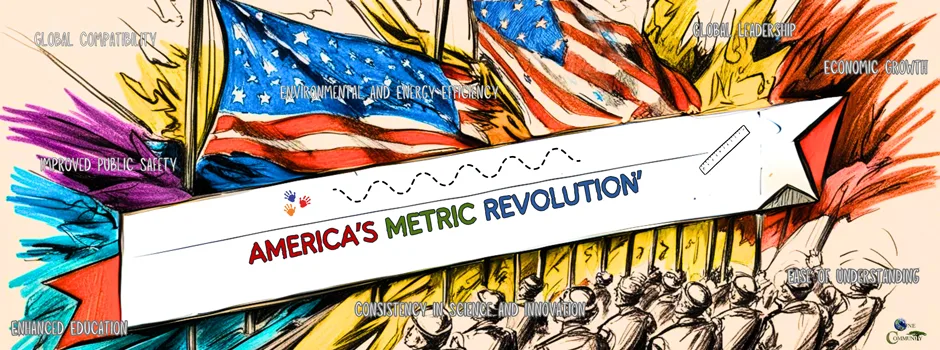
Help Modernize America: Switch to the Metric System Today!
Sign the petition here: Change.org
The United States is one of only three countries that have not adopted the metric system as the standard for measurements, alongside Liberia and Myanmar. This petition urges our government to lead the transition to the metric system—a universally accepted, logical, and efficient standard used by the rest of the world.
Adopting the metric system will have significant cultural, economic, and educational benefits. It is time to modernize our systems and fully embrace a measurement standard that aligns with global practices.
The Problem with the Imperial System
- Complexity and Confusion:
- The imperial system is outdated and inconsistent, relying on arbitrary conversions like 12 inches in a foot, 3 feet in a yard, and 16 ounces in a pound. In contrast, the metric system operates on a simple base-10 structure, making conversions straightforward.*
- Economic Isolation:
- U.S. companies face challenges when trading internationally, as they often need to convert measurements for global partners, leading to errors, inefficiencies, and increased costs.
- Safety Concerns:
- In critical industries like healthcare and aerospace, using two systems simultaneously has led to costly and dangerous errors.
- For example, the Mars Climate Orbiter was lost in 1999 due to a miscalculation stemming from a metric-to-imperial conversion error, an untimely end for the $327 million mission.
Why the Metric System is Better
- Global Compatibility:
- Over 200 countries, including every major economy except the U.S., use the metric system as their primary measurement standard. Transitioning would harmonize trade, manufacturing, and communication.
- Ease of Understanding:
- The metric system is intuitive, relying on units like meters, liters, and grams that scale by powers of 10. For example, 1 kilometer is 1,000 meters, and 1 kilogram is 1,000 grams, eliminating complex calculations.
- Enhanced Education:
- Adopting the metric system will simplify STEM education. Students currently spend time learning both systems, diverting attention from critical thinking and problem-solving skills.
- Consistency in Science and Innovation:
- Scientists globally use the metric system exclusively.
- Transitioning would eliminate discrepancies and foster better collaboration and innovation.
- Environmental and Energy Efficiency:
- Standardized metric measures can improve efficiency in industries like construction, manufacturing, and agriculture, leading to cost savings and reduced environmental impact.
Proposed Plan for Transitioning
- Gradual Implementation:
- Begin the transition by mandating metric use in specific sectors, such as healthcare, scientific research, and international trade.
- Introduce dual-labeling (imperial and metric) for consumer products during a transition period to ease public adjustment.
- Public Education and Awareness:
- Launch a nationwide campaign to inform citizens about the benefits of the metric system. Provide accessible resources to schools, businesses, and community organizations.
- Business Support and Incentives:
- Offer financial assistance, such as tax breaks or subsidies, to businesses adopting metric standards early.
- Legislation and Regulation:
- Pass laws mandating metric standards for all government operations, including infrastructure projects and public health initiatives.
The Benefits of Transition
- Economic Growth: Aligning with global standards will reduce trade barriers, increase efficiency, and enhance the competitiveness of U.S. businesses.
- Improved Public Safety: Consistent measurements across industries like medicine, construction, and transportation will reduce errors and improve outcomes.
- Streamlined Education: Students will no longer face the burden of learning two measurement systems, freeing up time for advanced STEM studies.
- Global Leadership: Adopting the metric system will signal the United States’ willingness to collaborate and lead on global standards.
*This petition is organized by One Community Global, an all-volunteer nonprofit with team members from 60+ countries. As creators of open-source sustainable construction plans, we’ve seen firsthand the issues with U.S. Customary Units and the benefits of switching to metric.
 One Community
One Community

